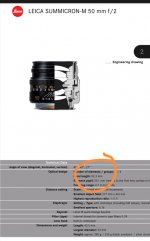boojum
Ignoble Miscreant
I think the biggest problem in discussing Jupiters, specifically J8's in my case, is that we are not talking about one lens but a family of lenses from different places. And then there is the QC problem. The old Soviet joke about, "We pretend to work, they pretend to pay us." comes into play here. Unmotivated work forces cannot be always depended upon to turn out high quality products. The workers did not always feel valued. But we all know there are some diamonds in the coal heap. I believe cautious shopping can raise the chances of getting a good lens. And when you get a good J8 you've gotten yourself a really fine lens with superb color and resolution. It is as if the old Nazi goal of putting a German head on a Russian body bore fruit. Fortunately not as The Third Reich envisioned it.
I post these not as examples of my prowess, little as it is, but of the prowess of the lens.
I post these not as examples of my prowess, little as it is, but of the prowess of the lens.








